Targeted marketing is often considered the Holy Grail for marketers. After all, who wouldn’t want to be able to reach the right customers with the right messages, and hit that bullseye as regularly as possible? Market segmentation, the long-used tool by marketers to enable targeted marketing, often makes some marketers shudder from past experiences. However, if approached in a systematic, thoughtful way, market segmentation can be a powerful tool – enabling your best marketing efforts yet.
Let’s start off with a refresher on why we even conduct segmentation in the first place. Segmentation divides a defined market into smaller groups who are similar in certain ways and are likely to exhibit similar behaviors related to their attitudes, interests, lifestyle, brand perceptions, demographics, etc.
The Purpose of Segmentation
The purpose of segmentation is to drive tailored approaches to these smaller groups (or “segments”) in a number of key areas, including marketing communications, value proposition & offerings, and delivery of products/services.
It boils down to essentially…
Communication is Key
One of the most critical lessons learned from experiences in our recent past is that communicating with clients, frequently and openly, optimizes the experience…
- For what purpose do they plan to use the segmentation? Without addressing this question fully, a segmentation study may as well be paused until all stakeholders have completely thought through how the study results will be used. Too many times, segmentation studies are conducted with no distinct use in mind, only to then have confusion and unease at the conclusion of the project.
- Build hypotheses (multiple) together. These hypotheses are critical, as they can help to shape the questionnaire that is used to build the segmentation, and are an important piece of the segmentation analysis. Though they should not be leading, during questionnaire development or analysis, jointly discussed hypotheses are an important building block of the process.
Why Hypotheses Matter?
- Recognizing previous segmentations: often, existing or former segmentation schemes are brought to light in hypothesis building. This helps to both understand the value they offered and avoid pitfalls experienced in the past.
- Preview of outputs: this is an opportunity to show what the output of the segmentation study may look like, achieving early buy-in and enabling course corrections.
- Building blocks for questionnaire design: key variables that may play a primary role in segmentation will become apparent in the hypotheses; a well-designed survey will
capture data points around these hypotheses. - Starting point for analysis: after completing data collection, there will be near-limitless combinations of variables to consider including as part of the segmentation analysis; those central to the hypotheses are a logical place to start.
Project steps should be collaborative as well, such as survey development, sample size determination, data analysis, reporting, and socialization. We encourage collaboration with not only the immediate end-users, but with all stakeholders to avoid unexpected surprises at the end.
One particular aspect of working through a segmentation study that we think is crucial to success is, DO NOT SETTLE until a solution really “clicks.” We encourage all practitioners and end-users to work together to push results further and further for a deep understanding. While it may feel satisfying to run a scheme, that appears to work well, and seems statistically sound, often the most usable schemes are achieved through rigorous investigation. Thorough profiling (often on multiple schemes) helps to paint a complete picture before agreeing on a single scheme.
Risks of Overpromising
As with any research endeavor that sets out to address marketing needs, expectations about segmentation analysis and deliverables need to be kept in check – again, a key area for communication between practitioners and end users.
- Segmentation often answers questions about which customers are similar and how to tangibly meet their needs, but often comes up short in connecting with them on an emotional level. It is vital, when designing the research questionnaire, to include questions that will help the researcher understand potential customer emotions and attitudes toward the product or service at hand. These emotions and attitudes will not only help to delineate between groups, but will also be crucial in helping to develop marketing plans and messaging.
- The solution of “best fit for the business” and the most statistically accurate solution will not always align – researchers and clients need to work together to find a balance. This is why segmentation is considered both art and science; be prepared to be comfortable with considering both.
- It is important to establish in what form the segmentation output will be used – examples may include:
Understanding how it will be used up front is critical – for example, a segmentation can be run solely on existing database variables if that objective is established up front.
Sometimes It Simply Takes a Different Perspective
If you are knee-deep in a segmentation analysis, and are having trouble moving forward, here are a few tricks that we have found to be helpful…
- Same data / different view: Consider using different versions of the same data point: Maybe a numerical response (e.g., volume, spend) will have a different impact on the model when categorized differently (e.g., small, medium, high –> small, medium, high, very high, highest).
- A priori cuts: Might an a priori cut be useful? Either…before running schemes “using the math” to run schemes (Do similar segmentations emerge within these two groups? Is there a business reason to keep certain customer types separated from the start?) OR after running schemes (Should one of the segments really be two separate segments? Do customers within a single segment really have different needs?).
- Mix and match: Explore question types combined as well as separately to get different perspectives: Running demo/firmographic and attitudinal questions together, and then separately.
Though there are certainly other ways to approach market segmentation practically, based on experience, we are confident those outlined here will establish good practice in what can be a highly rewarding process.




